Update: After 20 years of burger war in Sri Lanka since 2002 the ceasefire – that’s not just good news
Were it 60.000 or 100.000 people who had to live their lives in Sri Lanka in the last two decades? There were times, there were exact numbers important. Times in which the public in the banne of the Body counts was standing. Today, the victims are an abstract coarse, as well as the battlefield they came to. The conflict has been on ice for two years, the watches have stopped. The natural disaster, which has been brought to Christmas 2004 in the first place Sri Lanka, has worsened this situation. Not just more than 10.000 death victims had to be added. Especially the rigid has reached a new degree. Experts skate that alone the consequences of “Flood”(ZDF) 10 years of recovery.
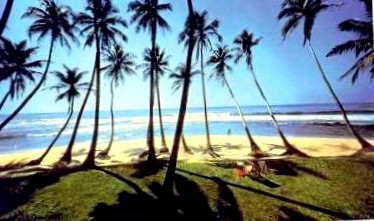
Tourist attraction: The beaches of Sri Lanka
Already from afar are the rhythms to horen. Whipping, repetitive, ecstatic. While the percussive clinches increase in intensity, the drought of people becomes poet and finally almost impenetrable. Vocal voices shell out in the worms of sound, Sinhalese or Tamil – the official languages of Sri Lanka. This can be found in the trade fair plan of the International Tourism Borse 2004 in Berlin: indoor position and neighboring points can be found that the spectacle takes place in the department of India’s small neighbor.
Whoever has the way through the people, sees in the center of the exhibition stand two anticipated-looking, gigantic pricks, in whose center is a staircase surrounded by spiral walls. At the front, a trommolder produces the increasingly louder and intense trance-like rhythms, surrounded by several tanzers moving Muhelos in their traditional costumes and with grazious facing the beauty of their country: one of Lagoen’s island, with wide tense deep and custodian levels, a tropical climate, which is mitigated by the Hohenlage and influenced by sudostasian monsages. Meanwhile but also of earthquakes, the “Killer waves” (Image).
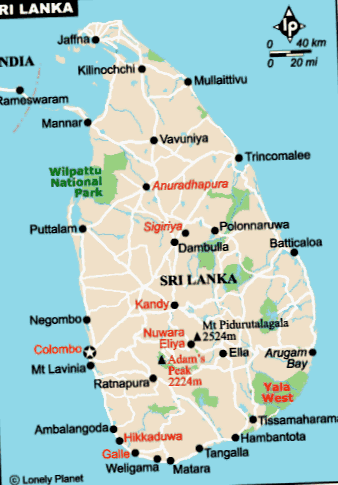
Ensures from the Trott of Land to Land, is the visibly ventilated ITB audience these energetic dancers against them – two poles that can hardly make a clear contrast: here the disciplined corpers in the anonymous mass, tied to a pre-recorded course, The World Exhibition of the ITB leads. There the discharge physique, which is committed in symbolic connex of a ritual and traditional community.
Riviera at the Indian Ocean
Behind the performance backdrop, Sri Lankan Airlines opened his camps. The exhibition stand is a mixture of flight simulator and Airport Lounge. Here you can perceive for a few minutes and rest from the strapaces of the fair, but only as a customer is really welcome here. In this property you will be invited by ladies in traditional costumes for tea, prompted to sit in the upper VIP department and not only folded with brochures and beautiful holiday prospects, but primarily for booking a flight stopped.
A brochure promises “Holiday after mab” in a “Unluminous country”. Already aboard the airlore one becomes part of the infinite friendliness of the islanders. Hospitality, the tradition has. Already in the birth of the mass tourism, Sri Lanka attracted tourist office in Frankfurt with slogans like “Come whenever you want!” and “They live cheap on Ceylon, because their money is worth 55% more.” Shortly before the islandation stripped the colonial name Ceylon and renamed him in Sri Lanka in 1972, it was fully advertised that they could “do not run over” is. Yet! Because already 1970 German vacationers expressed the British from the top position of the tourism charts.
Sri Lanka changed his face in this time – but rather behind the scenes. Especially on the Sudwestkuste there was a built in history boomoom. Multinational corporations acquired land priced and real estate, including Boac and Trust Houses Forte International, as well as global gastronomy companies such as Holiday Inn and InterContinental. Hotels arose, which wore preppy names like “Pegasus Reef”, “Coral Gardens” and “Blue Lagoon”. Despite the forced development, one remained faithful to his story. The hotel company Hyatt, who then emerged from a governor palace “Mount Lavinia” took over, modernized and expanded the property without destroying his old core. The government, which even invested much in the new growth industry, love with the “Bentota Beach” On the other hand, a hotel was created, which was designed in the style of an old Hollandic colonialfort.
The government had launched a tourist plan in 1967, which was very ambitious. By 1973, 2500 new beds should be created, until 1976 the number should be another 6.500 stucco are increased. For that year, one anticipated 100 after all.000 tourists – a decade of earlier were only 8.000. And so the female government head in those days announced: “It is the policy of my government to keep the treats open to our island of all tourists – from East and West, north and Suden.” While under these inclusive signs at the sudwest custody of the country the Riviera of the Indian Ocean was created, stronger the impression that Sri Lanka was not compelled to practice this openness to practice this openness.
Symptomatic for the domestic contradiction was a commitment of the uprising that was still too coarse as a secret organization in the subsoil operating frown (JVP). She was dissatisfied with the pace of socialization and in April 1971 introduced a circumference of codding, which could only be depressed by the militar with foreign weapons aid and was bloody. In 1977, in turn, the ethnic minority movement of the Tamils, who had tried in a peaceful way in the year before, to elaborate a reasonable position in the political system Sri Lanka. That meant nothing less than a Souveran territory in the northeast of the island. The polarization felt dominated that only six years later “Worst Case Scenario” Entered: In 1983, the open burger war broke out on Sri Lanka.
Jeweleninsel in the Flamenmeer
As in other countries that had stood under colonial rule, after the Second World War, the Jerk der British initiated an important turn into Sri Lanka after the Second World War. Since the Portuguese had come in 1505 into the country, one stood under foreign domination, which was first through the Hollander and then in the outgoing 18. Century by the English continued. After obtaining the independence as Dominion (1948), the country was very much stressed to leave the colonial time behind. The search for a national identity was in the 1950s at the determining moment in the election campaign. And that meant that one wanted to uniform the multiethnic and multireligious land on the linguistic and cultural level. A unity should arise. The election of the national movement was 1956 “Sinhala Only”. The language of the Sinhales, which set the majority of the population and, apart from the natives – had to record the longest history on the island, should become the official language.
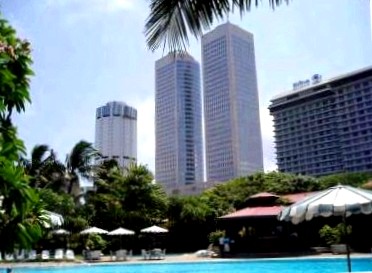
The World Trade Center in Colombo
Under high prere, in the more years, the modernization was worked on the socialist sign and thus had different projects such as the establishment of a nationwide infrastructure and literacy to the object. Developments that led to a sustainable alienation of the large minority of the country: the Tamils, which in contrast to the Buddhist Sinhalese, the Hindu religion accompanied. They looked very much as a second-class burger. Not only their religion, also their culture and language was returned in the new Sri Lanka and secondary. They were able to start little with the self-exploitation of the Sinhalese. After all, their history on the island was more than a thousand years old and they were – contrary to all discriminatory foreign telephones – the self-mortal for a proud people of anticipated, modest and traditional people.
Short, the “Sinhala Only”-Way meant the vacuum of Tamils, in whose rows were first the Tamil United Liberation Front (Tulf) and then the Radical Rebellic Organization Liberation Tigers of Tamil Eelam (LTTE) was created. The violent conflict broke out, as the LTTE fed an attack on an army patrol. This happened at a time when the paintings were already excited so far that the central government could only watch onto when the revolt act of the Sinhalese population proportion to a wide massacre to Tamilen. Hundreds of Tamils were totated in the course of this, far more had to walk to the north. The burger war sparked between the Tamil north and the Sinhalese Suden could not be stopped by an intervention of India: In 1987, the coarse neighbor marched with hundreds of thousands of soldiers, which lasted three years later after heavy losses unsuccessfully.
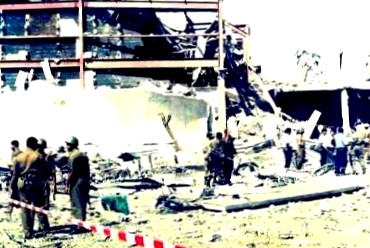
Suicide stop in the near the World Trade Center in October 1997
The two-front war shifted towards an asymmetric constellation. During the Sinhalese army with heavy protected against Tamil positions in the north, in 1996 even the Tamilenhochburg Jaffna could take, moved in the south of Tamil terror. While the “Riviera at the Indian Ocean” Bombing and exposed to suicide buttons, especially the capital Colombo turned into a scene of horror. How a visitor recalls, the scenes offered there were many times a cruel than comparable state in Europe:
The Rebells Were Car Bombing Colombo Skyscrapers Into Tiny Glass Shards, Shreding a Couple Hundred of Innocents in The Process. The Glass What Falling Like Hard Rain, Unheard By The Hundreds Whose Eardrums Have Exploded Like An Aerosol Can Tossed Into A Fire.
In addition to hotels, beaches and high-rise buildings, religious equip, to go and army bakes to goals of the attacks. When the World Trade Center in Colombo was sacrificed in 1997, the spiral of violence was nor at her highlight, as the burger war at its end (LTTE: Liberation Tiger or Terrorbrother?To). The most surprising was the head of the LTTE at the beginning of 2002. February An International Press Conference Customized and thus presented itself for the world’s world-specific. Very much striking, not to be put into a series with terrorist organizations, the LTTE-Fuhrung stafermannically and underpinned with her appearance once again the demand of the with-1970s on a Souveran state. Norway, who had taken the intermediary role to India’s backdrop, headed a payroll process that leads to a ceasefire agreement in the same years, which has remained binding until today.
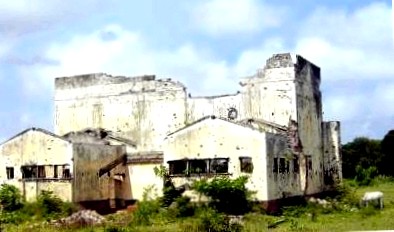
Jaffne is still strongly destroyed
Battlefield placed on ice
The Burger War has a destabilization, which is not only concerned with the country’s economy, but also the social structures. Especially the northeast has been groammy desic. Citys like Chavakachcheri are in rubble and ashes. Herself kilinochi, after the case of Jaffna to “capital city” The Tamil Territory has advanced, has failed to accept immeasurable stirring.
The Tamil population is drawn by poverty and sub-building. Grass diseases. Unemployment prevails. With the return of many escapeons from India, the risk of distribution of HIV increases. Many minor teams who have hired as child soldiers during the Burger War, voluntarily return to the ranks of the Tamil Army, not least because of this, because they offer little prospects for them. The natural disaster that has been brought to the country for Christmas 2004 has aggravated this situation. Next to the Suden Sri Lanka, are from the “Killer flood” Above all, the Eastern Kustenarien affected: Groby destruction and thousands of deaths, where it is usually to act for children and ages, were given by the army and the LTTE rebels to protocol.
The already cramped location has not relaxed. Grade knife of the persistent tension is mainly Jaffna. Mines, who scattered the LTTE periodally when they were forced in the 1990s to take Jaffna to the opposing side, still determine the cityscape today. Detailed cards are on striving ceilings, so-called “mine maps”, which should allow a possible peaceful navigation in urban space. Such cards were able to use the still hostile-minded warehouse of the split land, because the political territory Sri Lankas is until further.
Internal power struggles represent the bus program of the two poles and thus prevent the conflict of the conflict: during the Tamil side with disappearance generals, the political peak in Colombo is a struggle for influence on the agenda, which, in November 2003 even added that, the prime minister was gestured by a Washington visit. In its absence, the opposition driver had proclaimed the state of exception, the parliament dissolved and the power to be torn.
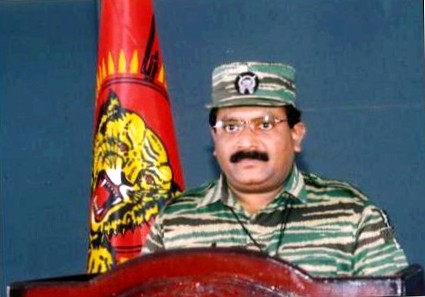
Velupillai Pirapaharan, who is at the top of the LTTE, warned in November 2004 a resumption of struggle when the peace process will continue to delay
Meanwhile, they give them diplomatically, expressly stand by the US grants in a billion low in view. The official image Sri Lanka, which has been hopefully worked since 2002, should not be a doubt about that with the “Loweninsel” be reckoning. That the country after 20 years of burger war of the aubenwelt is again available – especially tourism.
The motto of a mobile service provider “Jaffna Connected!” makes it clear that a ruin city like Jaffna should not remain excluded from this development. In 2003, as Sri Lanka proud 500.Was able to record 000 visitors, there was a branch office from Sri Lankan Airlines. The upcoming return of escape plants in the airline provides an enormous market and if you can pack the service as a beneficial purpose, you could even send a glorious role in reconstruction.
Tourist infrastructures also prove to be “Flood” as helpful. Where structurally weak regions have been developed by the service industry, there are hardly any other alternatives. Unless there is dead or existentially from the catastrophe, tourism entrepreneurs become heroic helpers in the crisis area – the African game of this phanomena was with “Hotel Rwanda” (2005) A monument set in Celluloid.
The advertising cones from Sri Lankan Airlines meanwhile recognizing how the future of the country should look like. The radiating faces of the flight attendants who adorn the advertisements are ethnically unadorned, somehow panasian-acting models, which also dominate the advertising landscape in other industries Sri Lanka. By lifting ethnic boundaries, these homeless faces suggest the cancellation of the ethnic conflict. Your appearance makes the terror forgot from yesterday and can be described as a post-historical in this sense. What is lifted with the Panasian protective ideal is therefore not only the conflict, but also history. This could be designed as a mourning work: who today travel reports from the 20s, 50s and Fruhen 70s of the 20. Century reads, can only guess what loss Sri Lanka had to suffer from the developments of the last two decades.
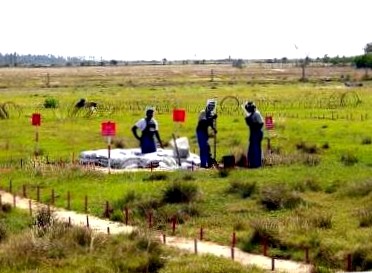
Also the surroundings of Chavakachachcheri is Vermint
On the other hand, you will not forget in the reading of so flushed rows, as you leave Arthur Holitscher or Paul Bowels, that in that golden time, an ideological program was born, the Sri Lanka derived as a Buddhist territory and the country splits sustainably. Although among other signs, here: those of advertising, is the message today “Sinhala Only”. As investigations of Steven Kemper have shown, the target group of the advertisers is almost exclusively from Sinhalese. Only one of the approximately 100 agencies in Sri Lanka turns to the minority: the Tamils. Meanwhile, their entitlement to a defensive territory is not least in the mirror of the foreign press in miscredit – there they become sufficient as “left guerilleros” and “immigrant” designated. Their culture threatens to forgotten.
Although it reads that the trenches of Jaffna from the taxi of Tamil rap and in so-called “Video Projection Halls”, which today replace the destructed cinemas, also running Tamil productions. But with the destruction of the city library, part of the Tamil history has been lost, which is irreplaceable. The books who can be borrowed today will take less the Tamil tradition of island history into account, as the fact that the collective thought is suffering from amnesia.
This disease has through the “Flood”, The Sri Lanka has been affected, a new stage reached. It is expected that the tourism sector after the Hohenflugen of the last two years to the stand of spades of 1980s will be accumulated and slowly recover. It will take a long time for visitors to get trust in the island paradise, as experts prophesies. The speech is from up to 10 years.
Sri Lanka, this is a frozen battlefield today, on that since 1983 almost 100.000 people had to leave their lives, which is surprised by millions of landmines and made the annually people homelessly: Unicef paid in front of the flood catastrophe 800.000 refugees, most of them children. With the ceasefire, a situation was placed on ice, which could not constitute a real alternative to the war condition and can. Sri Lanka remains in the suspended state, which does not allow both sides to start a new beginning. There is a standstill on the island. Progress finds if overhead, beyond history instead.